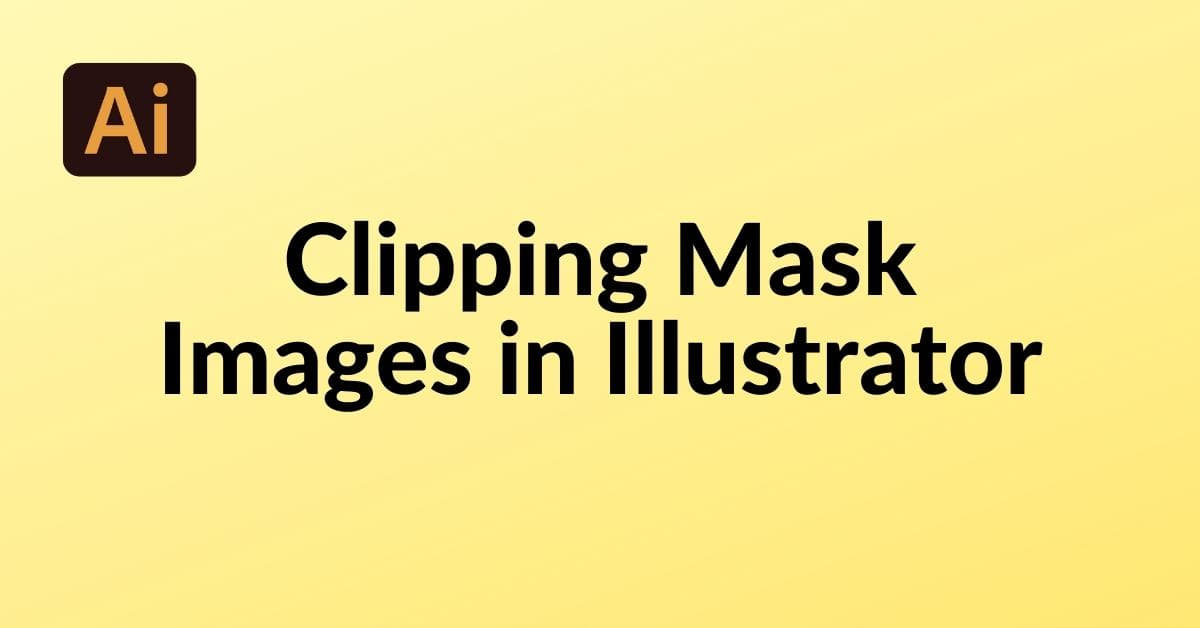Adobe Illustrator is a versatile graphic design tool that empowers designers to create stunning visuals. One of its powerful features is the clipping mask, which allows you to hide or reveal specific parts of an image. In this article, we’ll explore the ins and outs of using clipping masks for images in Illustrator, from the basics to advanced photo editing techniques. Whether you’re a beginner or an experienced designer, this guide has something for everyone.
What is a Clipping Mask?
A clipping mask in Illustrator is a powerful tool that allows you to hide or reveal portions of an object based on the shape of another object. Essentially, it acts like a stencil, defining what parts of the artwork are visible and what parts are concealed.
How to Create a Clipping Mask for Image in Illustrator
- Select Objects: Start by selecting the object you want to use as the mask and the object you want to mask. The mask object should be on top of the object to be masked.
- Create the Clipping Mask: Go to Object > Clipping Mask > Make, or use the shortcut Ctrl+7 (Cmd+7 on Mac). The top object (mask) will now define what’s visible in the object beneath.
- Edit the Mask: You can easily edit the mask by selecting it and adjusting its shape, size, or position. To release the clipping mask, right-click and choose ‘Release Clipping Mask.’
Using Clipping Masks with Text
Clipping masks can be applied to text in Illustrator. Create a shape that you want the text to be confined within and place it over the text. Then, follow the steps mentioned above to create a clipping mask. This is a fantastic way to create captivating text effects and make text wrap around objects seamlessly.
Advanced Techniques with Clipping Masks
- Compound Clipping Masks: You can apply multiple clipping masks to a single object, creating complex artwork. Just group the object and apply multiple masks, one after another.
- Opacity Masks: Combine a gradient or texture with a clipping mask to create a unique effect. Select the object, go to the Transparency panel, and choose ‘Make Opacity Mask.’
Tips for Effective Clipping Mask Usage
- Organize Layers: Keep your layers organized for better control. Label and group objects that are part of a clipping mask.
- Avoid Complex Shapes: Complicated shapes may lead to unexpected results. Experiment with simpler forms when you’re getting started.
- Experiment with Opacity: Adjusting the opacity of the mask can create intriguing effects, especially when working with images.
- Backup Originals: Always keep copies of your original artwork in case you need to make changes.
FAQs
Q1: Can I use raster images with clipping masks in Illustrator?
A1: Yes, you can use both vector and raster images with clipping masks. However, vector images tend to work more smoothly with less loss of image quality.
Q2: How do I release a clipping mask in Illustrator?
A2: To release a clipping mask, select the masked object and right-click. Then, choose ‘Release Clipping Mask’ from the context menu.
Q3: Can I apply multiple clipping masks to the same object?
A3: Yes, you can apply multiple clipping masks to a single object. Each mask will affect the visibility of the object in a unique way.
Q4: Is there a limit to the number of objects I can use as clipping masks in one document?
A4: There is no specific limit to the number of objects that can be used as clipping masks in one document. However, using too many may make your file harder to manage.
Q5: Can I edit a clipping mask after it’s been created?
A5: Yes, you can edit a clipping mask at any time by selecting the mask object and making changes to its shape or position.
Conclusion
Clipping masks in Adobe Illustrator are a versatile and creative tool for designers. With a good understanding of how to create and use them, you can create visually stunning and unique artwork. Experiment with different shapes, objects, and techniques to unlock the full potential of clipping masks in your designs. It’s a skill that will undoubtedly enhance your graphic design capabilities.
This page was last edited on 19 February 2024, at 1:01 pm
